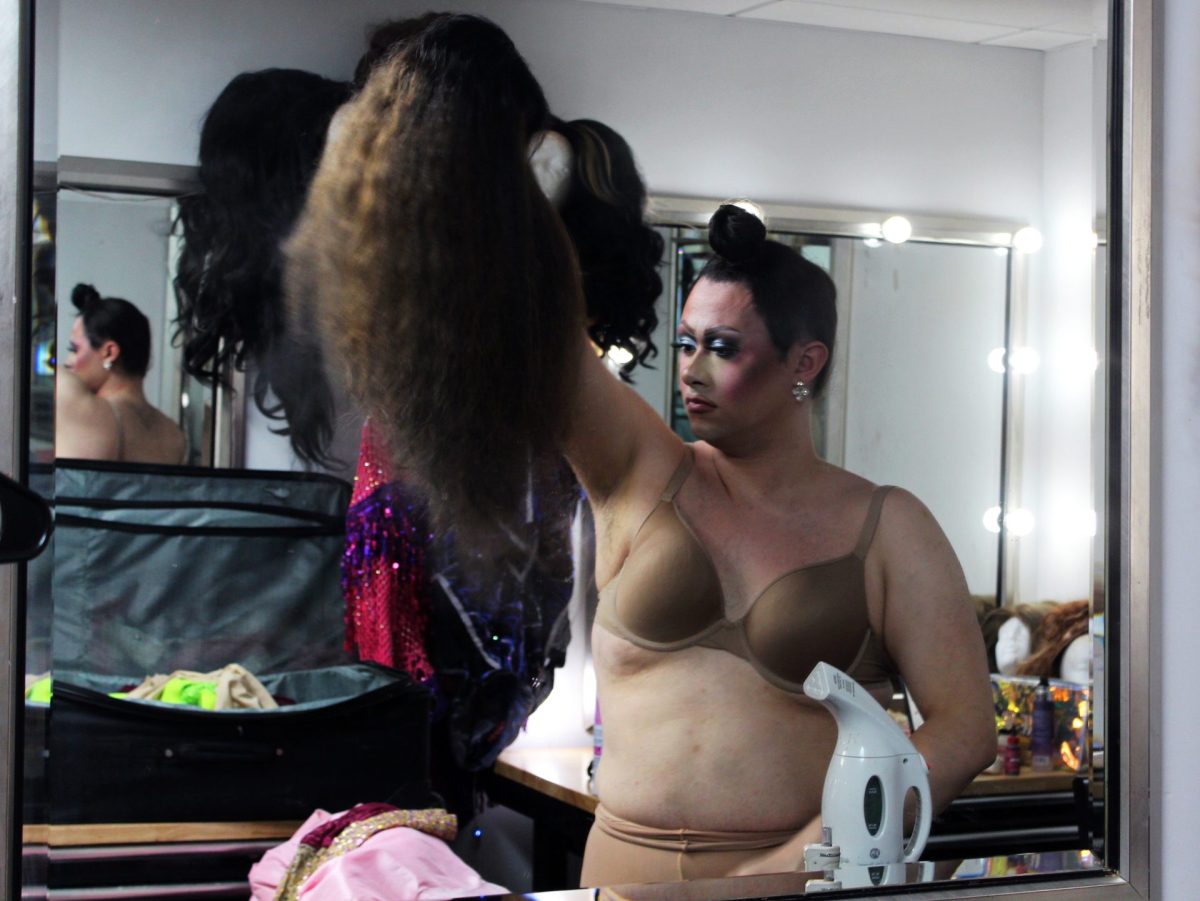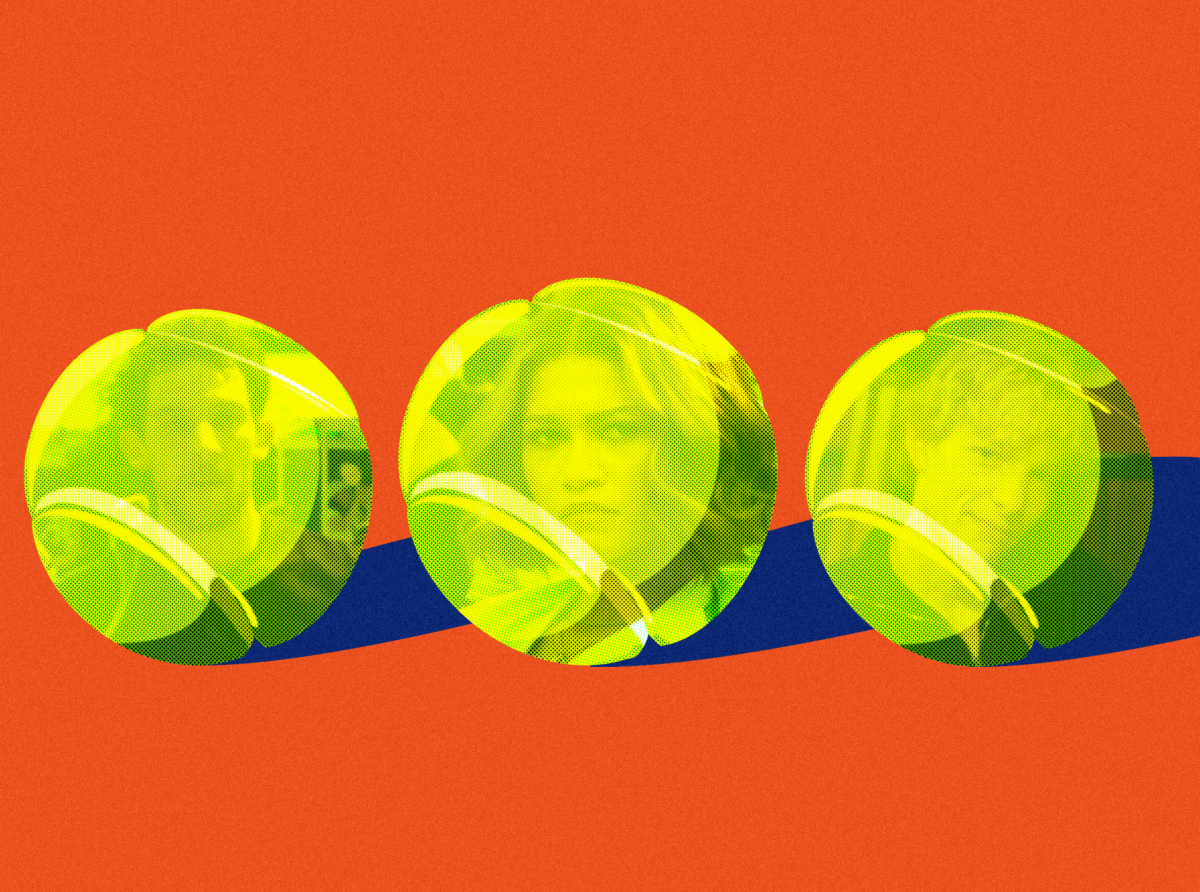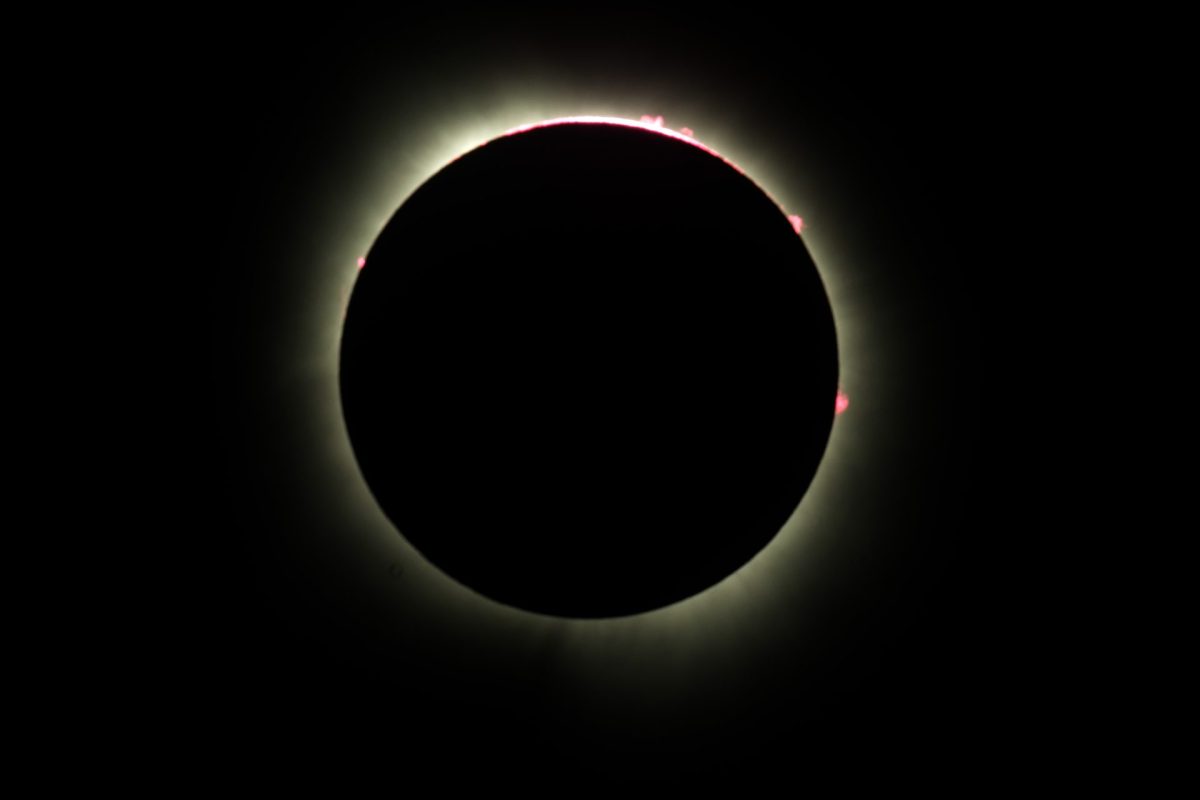In a room tucked away in the corner of the 1237 West apartment complex, Michael McLaughlin, Steven Seyer and Spencer Douglas are listening intently to a song Seyer has been working on. Seyer’s studio monitors resonate with a pounding bass, crisp high-end and a digitally manipulated vocal track. A veritable brain trust of musicians, they trade comments back and forth; quick to offer keen insight on how to improve the track.
“I would say make it as spacey as you had it, but then less spacey, but not as less spacey,” said Douglas, in order to get the reverse reverb effect just right.
The trio is part of the group Audiophiles at DePaul, and they meet every Friday to collaborate on mixes and discuss recent trends in music production and aesthetics. Although their instrument of choice – a laptop – may seem unconventional to some, they represent a growing body of artists who are tapping into a wide array of production tools and revolutionizing the way music is recorded, performed and shared. Their work is not going unnoticed either – artists making music in a similar vein have gone from playing small clubs to headlining music festivals and landing number one singles within the span of a few years. They have climbed the ladder from relative obscurity to international fame in no time at all thanks to producing a single by Rihanna or remixing an Ellie Goulding song. Yet many still see these producers and DJs as nothing more than well-paid button pushers.
“Anyone can pretty much get up there with a computer and play music,” Douglas admitted.
“But producers must know a lot of technical stuff,” McLaughlin added. “They have to look at things analytically.”
With a plethora of virtual instruments at their disposal and an infinite amount of tweaks that can be made, producers of electronic music must have an ear for minutia. The staggering parameters available to modify goes beyond basics like pitch and volume. Programs like Ableton Live allow its users to manipulate any imaginable aspect of the sound, right down to the sine wave. These programs are intended to streamline the process of working with digital music by eliminating the need for extra equipment, but in order to use them to their full potential, the user must achieve total mastery. That could mean hundreds of hours of work and thousands of tracks before finding that perfect sound.
“When you first learn a program, it’s like learning a language,” said McLaughlin. “And when you go between programs, it’s like going between languages.”
In order to increase the versatility of the software, Ableton Live allows the user to install programs within the program, so to speak. This Virtual Studio Technology, or VST, is created by a third-party and available for download on the internet. VSTs allow users to have at their disposal a myriad of synthesizers, drum machines, effects units and much more. All of these can be fine-tuned within the program, without the need for expensive and space-consuming equipment.
McLaughlin, Seyer and Douglas are able to craft lush instrumentals, computer-manipulated vocals and studio-quality effects with little more than a laptop and a USB keyboard on hand. Thanks to this technology, Seyer said, the computer in the 2000’s is becoming what the guitar was in the 1970’s.
“It’s cool to see [music producers] drawing from a lot of different genres and becoming more familiar with the technology,” he said. “In the ’70s everyone wanted to be like Jimmy Page and play guitar. Now everyone wants to be a DJ.”
While electronic music is certainly more egalitarian today in terms of ease-of-use and cost effectiveness, its emergence as a definitive genre rather than a supplement to the standard rock sound has been in the works for quite some time. As Thomas Miller, Sound Recording Technology department chair at DePaul University explains, its roots go as far back as a century.
“The first synthesizer was the Telharmonium, built in 1898 before loudspeakers that could produce its sound even existed yet,” Miller said. He explained that the instrument took up the space of an entire room and relied on rudimentary paper cones fitted with an electromagnetic diaphragm for amplification. Despite its impracticality, its basic design continued to evolve as the understanding of sound production progressed.
The next major step came in the form of the trautonium in 1929, which allowed its sound to be manipulated though the use of a wire. It gained wide enough acceptance among musicians to have classical pieces composed for it. Electronic music continued to advance through the ’40s and ’50s in the form of experiments with magnetic tape splicing and electroacoustic instruments similar to the Telharmonium and trautonium. The results were often atonal, abstract, and hardly palatable to the record-buying masses.
A breakthrough came in the early ’60s thanks to Bob Moog’s invention of the modular synthesizer (synth), which is still a model for electronic music production today. These custom-built machines differed from their predecessors in their method of sound creation, relying on the now standard procedure of subtractive synthesis. In this method, the synthesizer creates a harmonically complex tone that is simplified by modules that control the voltage of the signal. The manipulated signal is then transduced into audible sounds by the synthesizer and heard through loudspeakers, allowing the production of a nearly infinite number of tones. Its interface, which consisted of hundreds of knobs, switches and inputs, as well as its prohibitive high price, left the Moog out of reach for casual musicians. Those who could both afford and understand it, however, became pioneers of electronic music as it is known today.
“‘Switched on Bach’ by Wendy Carlos was the first classical album to go platinum in the United States,” Miller said, “and it was created entirely with Moog synths.”
As the technology continued to progress by becoming smaller and more affordable, rock and pop acts began to implement synthesizers into their songwriting. By the 1980’s, few bands were complete without a keyboard to supplement the typical guitar, bass and drum instrumentation of those genres.
Innovation continued with the advent of the drum machine, providing percussion in the absence of a physical drum kit. It was this device that allowed electronic music to move beyond rock and into a genre of its own. One early form of electronic dance music, now referred to as EDM, was pioneered in the dance clubs of early ’80s Chicago. This “house music” was characterized by repetitive drum machine patterns and distorted synth melodies, and represented the spearhead for electronic music’s emergence on the pop charts.
“People lost interest in analog drum machines and were looking for a harder, grungier sound,” said Miller, recalling his days of working with early Chicago house producers. “I remember working on these records and people telling me, ‘Hey, it sounds too good. Could you dirty it up a bit?'”
The hard-hitting beats and overdriven tones that characterized house music have persisted in EDM as it is known today. The latest and most popular iteration of electronic music, termed “dubstep,” features downtempo drum beats paired with chest-thumping bass lines. Many dubstep tracks utilize a low-frequency oscillator to give bass lines a distinctive “wobble” that the genre has become known for. Originating in the UK, dubstep has undergone quite an evolution on its way to US airwaves. The British version, with its beginnings in London’s early 2000s club scene, focuses more on manipulation of the lower frequencies, creating pulsating melodic bass lines. The style popular in America, termed “brostep” by its detractors, places its emphasis in the middle register, with distorted synth squelches and hip-hop drum beats as its focal point. The result is seemingly polarizing; some equate it to “robot noises” and find it suitable only for playing at frat parties, hence the “brostep” moniker. Others, like DePaul sophomore Cole Hawking, can’t get enough of it.
“I love electronic music because of its danceability. It excites people,” Hawking said. After attending numerous dubstep shows in the past year, he has come to love the atmosphere as much as the music.
“Besides the rise in the music’s popularity, collectively it’s become a cultural experience,” he said. “Everyone that goes to these shows carries such a high spirit and happy sense of mind that it makes it that much more enjoyable.”
Some of Hawking’s favorite dubstep artists, including Zeds Dead, Knife Party and Excision, have all recently played shows at the Congress Theater on Milwaukee Avenue. While the Congress books a variety of acts, in the last year it has hosted a number of electronic artists, including David Guetta and Calvin Harris, as well as the aforementioned dubstep producers. Both Guetta and Harris are European DJs who have had great crossover success in producing for big name pop singers – Harris produced the backing track for Rihanna’s “We Found Love,” which became one of the best selling singles of all time. Brittany Spears, Kanye West and Snoop Dogg have all recently released albums that feature obvious dubstep influence or have collaborated with other electronic artists directly. This trend of adapting to changing tastes is certainly not new in the pop music world, but the speed with which it has occurred and the international reach of these artists hints at a kind of globalization of pop music.
“I think [in terms of globalization] you hit the nail on the head,” said music blogger Brendan Frank via email. Frank is a senior writer for the blog Beats Per Minute, which reports on emergent artists in the music scene. He viewed the trend of pop music adopting the EDM sound as part of a historical precedent, and perhaps spurred on by the ease with which information can be shared on the internet.
“I think the current emergence of dubstep and EDM can be likened somewhat to the emergence of Gangsta Rap in the late ’80s or Rock and Roll in the early ’60s,” he said. “It’s a traditional ‘movement’ as much as it’s possible to have one in the digital age.”
Professor Miller expressed similar sentiments, viewing the history of music as one that is bound to repeat itself.
“I think EDM and dubstep became popular as a response to hip-hop becoming too complex,” he said. “Trends in dance music are cyclical. This is just another ‘back-to-basics’ movement.”
Perhaps, then, anyone familiar with the music industry could have predicted the rise of EDM, and may be just as quick to prophesize its downfall. Besides its sometimes abrasive sound, electronic music is often derided for its simplicity and ease of performance. McLaughlin seeks to challenge this common conception of the genre with his newest project, a band called Girl Electric. His vision for the group is to meld the high-energy sound of EDM with the adrenaline-soaked aesthetics of rock performances, providing a new twist on both genres.
“We have a guitar that’s run through these computers, really powerful computers, to be processed live. It’s like a spaceship,” he said, joking. McLaughlin hopes to use the latest technology to bring the two styles together in a way that will excite audiences.
“I want to bring this all together into kind of a dubstep, dancing genre,” he said. In this way, EDM’s core audience, those in their teens and early twenties, are also its primary innovators. With their drive to get just the right amount of “spaceyness” in their songs, they are continually pushing the genre forward to new and unprecedented heights.







